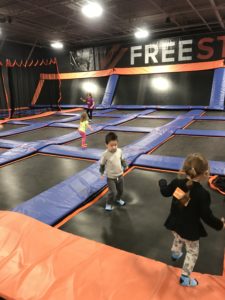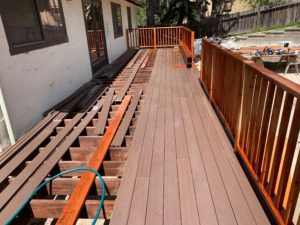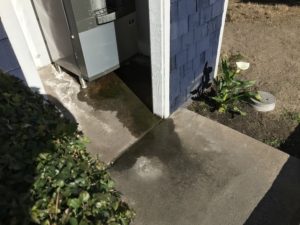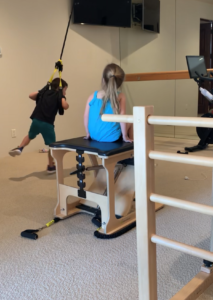What Parents Should Do if Their Child Was Injured On Another’s Property In Arizona
What Parents Should Do if Their Child Was Injured On Another’s Property In Arizona

In a lot of cases, small children get seriously hurt while playing on something dangerous. This is especially troublesome given that a child’s brain is underdeveloped and unable to consider the risks involved in certain activities.
It may be possible that your child is entitled to receive compensation for their medical expenses, pain and suffering and any permanent injuries that result from being injured on someone else’s property.
Before deciding to take legal action, you should consider the following:
If My Child Was Injured While Trespassing Can We Still Bring An Injury Claim?
Generally, Arizona recognizes three different legal classifications of people on the property.
These include invitee, licensee, and trespasser.
It is important to understand the classification of you or your child at the time of an injury. Each classification imposes a different legal duty upon the property owner.
An invitee is someone who is on the property by express or implied invitation for a business purpose. In other words, an invitee is invited onto the property by the owner. An example of an invitee would be a shopper at a grocery store, a customer at a restaurant, or a child at a trampoline jump center. Arizona law requires that property owners demonstrate the utmost duty of care to invitees.
Specifically, property owners must warn invitees of known dangers, take reasonable steps to eliminate known dangers, and actively inspect the property for new dangers.
In sum, they have a duty to keep the property safe for all the people they invite to visit it. This is a very high standard and the invitee classification allows an injured party the most protection and the best chance at recovering compensation for an injury claim.
A licensee refers to a person on the property by express or implied invitation for a social purpose, not for business
An example of a licensee would be a friend visiting your home or allowing children to play in your yard.
A property owner must warn licensees of known dangers and take reasonable steps to eliminate them.
However, an owner of the property does not owe a licensee a duty to actively inspect and uncover unknown dangers.
This classification is the middle standard. It falls below the duty owed to an invitee and above the duty owed to a trespasser.
A trespasser is someone who is on the property without actual or implied invitation
Generally, property owners are only liable to trespassers if the owners are reckless or show a blatant disregard for safety.
An example of this would be intentionally harming a trespasser or setting up booby traps.
However, an exception to this rule for children is the “attractive nuisance” doctrine.
What Is An Attractive Nuisance And What Is Arizona’s Attractive Nuisance Doctrine?
Arizona law recognizes that children are likely to trespass on property and imposes a duty on property owners to take specific precautions to protect them. Even if your child was a trespasser, they can still be entitled to compensation for his or her injuries.
The term “attractive nuisance” refers to dangerous conditions which are likely to attract children.
For example, swimming pools, treehouses, heavy machinery, wells, tunnels, trampolines, rope swings, climbing objects, construction sites and animals may all be likely to attract children.
Children are naturally curious and want to explore things. It is proven that certain things that exist on property may attract the attention of children and their desire to explore. If something exists on a property, that children would naturally want to explore and be curious about, then the owner has a duty to anticipate that and either eliminate it or make it safe. If the property owner fails to do so, the owner may be liable for any resulting injuries to children.
Generally, in determining whether or not a property owner is liable for your child’s injury, a court will ask:
- Did the owner know or should have known that children were likely to trespass?
- Did the owner know or should have known that the condition posed an unreasonable risk of harm to children?
- What was the purpose or usefulness of the potentially dangerous condition?
- What burden did it pose on the property owner to eliminate it?
- How easily would it have been to eliminate the potentially dangerous condition?

Additionally, for the attractive nuisance doctrine to be used, it requires that the child “not understand the risk of harm involved.” This portion of the law was implemented to protect property owners from lawsuits from children who knew that what they were doing was inherently dangerous.
In other words, a property owner should not be penalized by smart children who knowingly undertook risky conduct. Property owners are not responsible for daredevil behavior.
Obviously, the younger the child, the less they are able to appreciate a dangerous condition. As a result, the attractive nuisance doctrine is easier to advance when a child is younger. However, the younger the child the stronger the argument that the child was not adequately supervised. As a result, property owners may argue that the parents of the injured child are at fault for allowing their child to encounter dangerous conditions and by failing to supervise them.
What Was The Dangerous Condition That Caused The Injury?
After keeping the legal classification of the child in mind, the next thing to consider is what caused the injury. If the child was an invitee at the time of injury, then the property owner would be responsible if he or she knew of the dangerous condition, or if a reasonable inspection would have uncovered it.
If your child was a licensee, then the property owner would be responsible for injuries that resulted from dangerous conditions that he or she knew or should have known about.
Finally, assuming the attractive nuisance doctrine does not apply, if your child was a trespasser the property owner would only be responsible if he or she was reckless or showed a blatant disregard for safety.
This is an extremely high burden to prove and usually involves showing some degree of intention on behalf of the property owner.
Whether or not a particular condition on property is “dangerous” is a question of fact for a jury to determine. At trial, all circumstances are considered, not just the condition itself. For example, a wet or slippery surface is not likely to be considered dangerous in a remote outdoor setting. However, it is likely to be considered dangerous in the middle of a grocery store aisle. Customers in a grocery store expect the floors to be free from debris and puddles.
For these reasons, it is very important to take photographs of the dangerous condition and the surrounding area where the injury occurred. Photographic evidence is useful for both capturing the condition and showing the overall nature of the property. The photographic evidence may show that the dangerous condition is one that lasted for a long time or that the owner had notice of. In addition to the hazard, the scene may show things that suggest the property owner did not reasonably maintain the property in a safe condition.

Take for example a slip and fall on a puddle in an aisle of a grocery store. While the puddle and the moisture on the floor surface is the dangerous condition, the scene could show other items suggesting negligence.
If there are cracked tiles or other hazards that exist, this may show that the property owner did not adequately maintain the property.
Other dangerous conditions like pallets in the aisle or stacked up containers or empty boxes, may suggest that the owner was less than diligent in the inspection of the premises.
Oftentimes, the property owner will attempt to correct or cover up the dangerous condition once an injury is sustained. As such, the only opportunity an injured person may have to capture the dangerous condition is at the time of the injury. If the injured party fails to do so, it may be very difficult to prove the case later. This may still be possible through the testimony of witnesses such as people that were present or people who knew about the dangerous condition. It may also be possible of video surveillance exists and is preserved. However, the “smoking gun” evidence is a photograph or video of the dangerous condition itself.
If My Child Is Injured At A Friend or Family Member’s House Who Will Be Responsible For Paying?
Often times, individuals are concerned about brining a claim when they or their children are injured at a friend or family member’s house or property. However, when such a claim is brought it is typically brought against an insurance company and under the friend or family member’s insurance coverage. The types of insurance policies and coverages that may apply include:
- Homeowner’s Insurance
- Property Insurance
- Renter’s Insurance
- Personal Liability Insurance Umbrella Policy
- Commercial Insurance Policy (if they operated a business from the property)
Friends and family members pay for insurance for two reasons. First, they pay for insurance to protect themselves and their assets when an injury occurs. Second, they pay for insurance to protect those that they care about and love, including friends and family members. In exchange for the thousands of dollars in monthly and yearly premiums that individuals religiously pay to their insurance companies, come the agreement that the insurance companies will pay compensation for injuries suffered to those that these individuals love and want to protect.
If insurance coverage does not exist, then the individuals bringing the injury claim do not have to proceed with the claim. In other words, the injured individuals can decide not to pursue the property owner personally. This is typically what happens in the injury claims we handle. If insurance does not exist to cover the injured event, we advise the client and the client makes the decision to close the case. In these situations, the client owes us nothing for the representation. Of course, an injured party should hire a skilled personal injury attorney first to help them determine which coverages may or may not apply.
What Types Of Dangerous Conditions Can My Child Recover For If Injured At Another’s House?
There are many circumstances where a child injured at a friend or family member’s property may recover. There are certainly too many to list. Below are just some of the types of cases and claims that may give rise to a recovery.
- Dog attack while at a friend or family member’s house
- Electrocution while at a friend or family member’s house
- Drowning while at a friend or family member’s house
- Injuries resulting from a motorized ride such as ATV, bicycle, scooter, golf cart, etc.
- Injuries resulting from failure of playground equipment such as a swing or play structure
- Injuries resulting from climbing or falling
- Injuries resulting from a defective product
- Injuries resulting from a defective railing, chair, step or stair
- Injuries resulting from falling on a slippery surface
- Injuries caused by a child of the property owner
- Injuries caused by the property owner
- Burn injuries from a firepit, fireplace or other heat emitting source
- Lacerations from glass or sharp objects
- Injuries caused by exercise equipment
- Injuries caused by construction
- Injuries caused by a bounce house or trampoline

Contact An Experienced Scottsdale Injury Attorney To Discuss Your Injury Claim
As each case is different, you should always consult an experienced attorney to determine whether liability of the property owner may exist. Do not discredit your case without talking to a skilled Scottsdale personal injury attorney. An experienced personal injury attorney from Scottsdale Injury Lawyers is available now to discuss your case. A consultation is free and we only earn a fee if we recover for you. Contact us today.
About the author: The content on this page was provided by Scottsdale personal injury attorney and civil rights lawyer Tony Piccuta. Piccuta graduated with honors from Indiana University-Maurer School of Law in Bloomington, Indiana (Ranked Top 35 US News & World Report 2018). Piccuta took and passed the State bars of Arizona, California, Illinois and Nevada (all on the first try). He actively practices throughout Arizona and California. He is a trial attorney that regularly handles serious personal injury cases and civil rights lawsuits. He has obtained six and seven figure verdicts in both state and federal court. He has been recognized by Super Lawyers for six years straight. He is a member of the Arizona Association of Justice, Maricopa County Bar Association, Scottsdale Bar Association, American Association for Justice, National Police Accountability Project and Consumer Attorneys of California, among other organizations.
Disclaimer: The information on this web site is for informational purposes only and does not constitute legal advice. The information on this page is attorney advertising. Reading and relying upon the content on this page does not create an attorney-client relationship. If you are seeking legal advice, you should contact our law firm for a free consultation and to discuss your specific case and issues.

